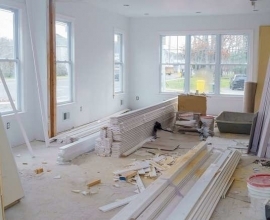A ‘bargain basement’ scheme: Ontario’s back-to-school plan under scrutiny
Ottawa Public Health says classes should be “as small as possible” to protect children from COVID-19 when schools reopen this September.
Small classes will help with physical distancing, said the statement. However, “Given the unique settings, designs and capacities of schools across the city, Ottawa Public Health cannot provide an exact number for class sizes.”
The statement also does not specify what is appropriate physical distancing in schools, a question that is at the heart of increasing pressure on the provincial government from education unions, some parent groups and opposition parties at Queen’s Park. They say the government’s plan to return elementary students to regular-sized classes is unsafe.
Public health advice in Ontario is to maintain a two-metre distance from people not in your 10-person social bubble.
At the province’s schools, the plan calls for physical distancing between students and staff “as much as possible” through measures such as spacing desks apart, staggering recesses, controlling movement in hallways and banning assemblies. Education Minister Stephen Lecce has said schools should “aim” for one-metre distancing.
Most high schools will adopt a hybrid system of part-time classes limited to around 15 students, which will make physical distancing easier.
Elementary students can return to school full time to regular sized classrooms that range from 20 to 29 students.
Class sizes are just one factor in safely reopening schools for the province’s two million students.
Ottawa Public Health’s statement noted that keeping community spread of the virus low is key.
Lecce made the same point at a press conference Monday when he and Premier Doug Ford defended the government’s back-to-school plan as the best in the country.
Lecce has rejected demands to lower class sizes in elementary grades. He says the province has introduced a bundle of measures to keep kids safe, including mandatory masks in Grades 4 to 12, more cleaning, public health nurses and grouping students into cohorts to limit how much they mix with others and make testing and contact tracing easier if there is an outbreak.
“The province is leading in virtually every element,” said Lecce on Monday. “The comprehensive nature of our plan should build confidence … We are doing everything we can to de-risk it, we are doing everything we can to follow the evidence, the science, and emerging advice from public health agencies to put the layers of prevention, and multitudes of actions…”
The government has allocated $309 million this year for COVID-related expenses in schools, which is the highest amount per pupil in the country, said Lecce. The total includes $30 million for “teacher staffing to support supervision, keeping classes small and other safety related measures.”
Source: https://bit.ly/31vdBWY






